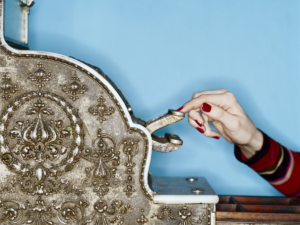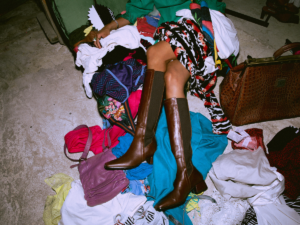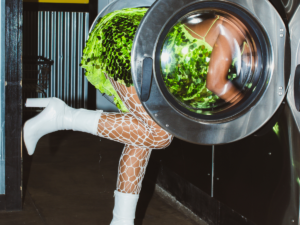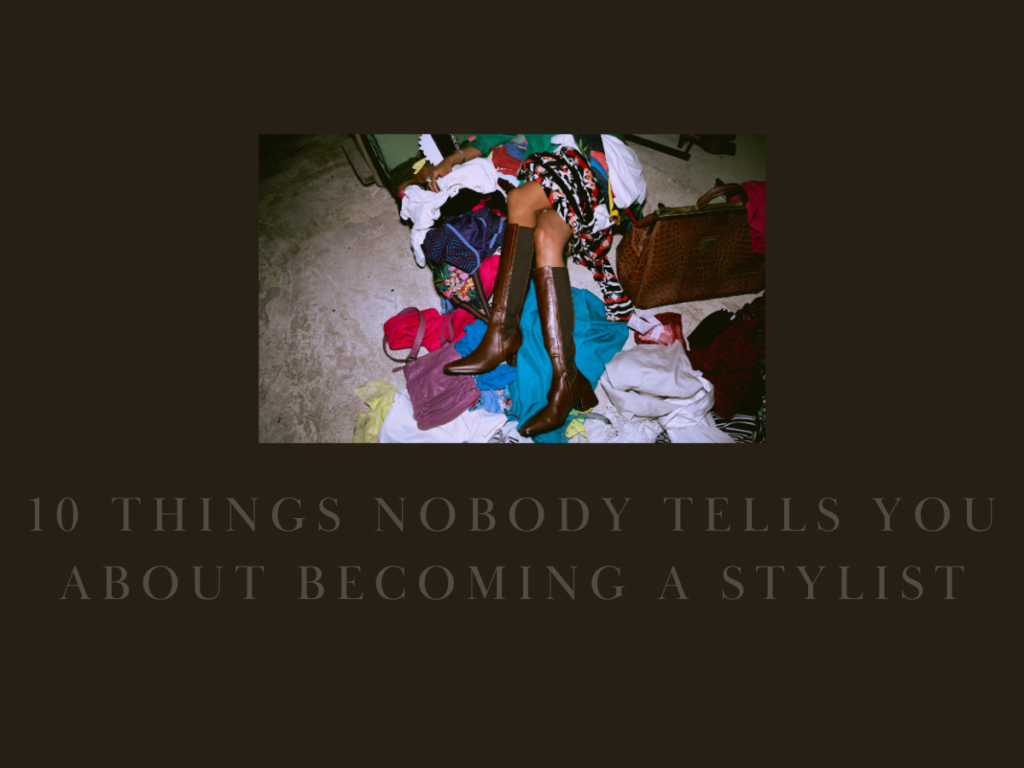Like they say, “You don’t know until you know”. Here are ten things most stylists don’t realize until they become one.
ONE

Your Credit Score Counts
Before I was a professional stylist, I had one credit card with a low limit that I rarely used. Now, 4 or 5 cards later, I have enough credit to fund a small circus, (basically what styling is). The copious amounts of credit available to me, made possible by maintaining a high credit score, is the reason why I can say yes to certain projects; because I have this pool to dip into.
It amazes me that the credit conversation never came up while I was, especially with the weight it carries in the potential of a stylist’s success. The first time I realized its power, I was nonchalantly asked to charge the card of another stylist for a rental bill totaling more than $20k. Without a flinch, she handed me her Amex and I was instantly transported to the world of available credit and what it could mean for a stylist.
Having a high credit score at my disposal has allowed me to take on credit (and thus jobs) that I may have otherwise had to say no to. Big, career changing gigs, that have allowed me to grow as an artist and as a business.
Money talk is often avoided in conversation, especially among creatives who prefer to discuss concepts, but facing the logistics of funding a project, whether it’s commissioned or not, is a conversation worth having early. The truth is, stylists are often expected to start a project before budgets have been allocated and any funds received, which means sourcing, pulling and having items shipped may temporarily become the monetary responsibility of the stylist in order to meet the project deadline. I’ve also had many projects that I funded entirely and was later reimbursed by the client, studio, label or production after the job was finished.
Plus, clients aside, you will likely have your own personal projects and portfolio shoots to personally fund as well.
So, to take advantage of every opportunity that comes your way, without worrying whether you can afford to deliver your best work, it’s important to pay attention to your credit rating.
TWO

Savings Matter
Obviously, savings always matter, but it is especially true as a professional freelance artist.
A pocket full of change is important, not just for a rainy day, but to accommodate the inevitable downtime and chasms of space between paid projects; the infamous inconsistency of the world of creative freelancing within an industry that is always fluctuating.
Having funds available between bouts of downtime between projects will allow you to steer the course, especially at the beginning, a period in which you will experience the most space between gigs (think: long wait times between checks), while you build your experience, portfolio and client roster.
Before venturing into the world of styling, ask yourself if you are financially ready to take the leap. Take into consideration the time needed to get your foot in the door of the industry, because it doesn’t happen over night. Building your book will take an investment; you won’t be getting paid for the time you put into it, at least not right away. It will take money to get around to various studios and for pulls and returns. Interning, the quickest way to learn the ropes and get in with a fashion stylist who will hopefully take you under their wing and eventually hire you to assist, does not always pay monetarily. Any courses that you may want to take will also be an investment of time and money.
The first year I was a stylist, I spent more on living and building my book than I made as a Stylist and as I transitioned into going out on my own, I was not prepared for how hard it was going to be. I accumulated debt, which I later, luckily, was able to pay off using the checks of my first big jobs.
It takes time to build a portfolio (aka producing your own photoshoots), acquire skills (through interning/assisting/courses) and resources (like a stocked kit and a strong network) that will land you higher paying jobs and eventually to being a lead stylist.
With a majority of clients paying net-30, net-60 or even net-90 (yikes!), even when you land the big gigs, you will need funds available to float between paid invoices without using credit alone or taking a major hit to your lifestyle (in the form of an eviction notice).
But perhaps the single most important reason for saving is to remain the majority stockholder in your personal brand. Having money to pay your bills, whether you get the job or not, is how you keep control over your artistic expression and career trajectory. Money in the bank means you can say no to work that doesn’t serve you or your styling path. It means that you can take time to focus on personal projects that will further your career, instead of taking unfulfilling projects just for the money. It gives you the power to work with clients you are passionate about and allows you the freedom to say no to difficult clients projects that aren’t worth the rate.
Savings will put you in the driver’s seat of your own career, leading you in the direction that you want to head; because the best projects for your future are not always the ones that pay the most.
THREE

It’s Basically Like Having Your Own Business
Being a fashion stylist is less like a job and more like running a business, and a business takes money to operate.
Unlike ‘getting a job’, where a paycheck quickly follows (and is maybe even the main objective), starting a business takes an initial investment: of time and energy.
To really get started as a stylist, there are a few unavoidable start-up costs, like building and maintaining a functional kit, investing in portfolio images, and obtaining a personal website and domain to build your digital portfolio, the tool that will get you booked.
But, there are benefits of having your own business, like being in control, which means nobody is going to tell you when and how to grow your business (yay) which means that nobody will tell you when and how to grow your business (boo).
When you need something, like a stapler, or important supplies, there’s no showing up to work and rummaging through the supply closet, unless of course you created one yourself.
Being a lead stylist means always taking the initiative; there is no coasting like in a salaried or office job, if you don’t work, you don’t get paid; you get exactly what you put into it, which is simultaneously exhilarating and terrifying.
FOUR
You Will Never Have a 9 – 5
You might have a 7 – 7 or a 10 – 8 or an 8 -5 (8pm – 5am) but you will not have a 9-5.
There is no guaranteed consistency within the world of fashion styling; the only guarantee is it’s constant inconsistency.
Which is exactly what I enjoy about it. Coming from a corporate 9 – 5, the sureness that everyday would be much like the one before was excruciating; I craved excitement, the inevitable byproduct of uncertainty. And even though I actively pursued this change in my life, it still took some time getting used to, especially navigating the unpredictability of my schedule with two young kids.
Eventually, I found a way to traverse my always changing schedule that allowed me to feel in control of it, and the uncertainty of where my days would lead me went from being stressful to becoming an enjoyable part of the job. Working on different projects in different locations at different times of the day is exciting, even if it can be a bit tiring at times. But, because of savings (ahem), a little downtime or vacation time between projects is always a possibility.
And unlike a 9-5, where you ask permission for time off, you decide when vacation is and for how long. (Also unlike a 9-5, vacation time is on your own time, there’s no vacation pay and you may miss out on work that comes up while you’re away).
FIVE

There is a lot of stuff involved
And when I say stuff I mean mounds of merchandise, clothing, accessories, shoes and bags; loads of stuff that you will be lugging around with you.
It should come as no surprise that the stylist would be bringing the clothes, but assistants are still stunned with the amount of packing and luggage involved. Of course the client doesn’t already have the clothes, that’s the whole point of the stylist! Stylists are expected to bring the wardrobe to the client, wherever they may be, or make the necessary arrangements to make it happen.
So whether it’s for a commercial, a fitting, a fashion advertisement, a red carpet event or filming, the wardrobe goes wherever the client is. This means the clothes better be there when they get there.
So if it’s a location shoot, it’s your job to coordinate the clothes to be there, if it’s a press tour, that wardrobe is going to tour around with your client and you expected to make sure it doesn’t get lost. If you’re filming or shooting an ad campaign, whether in studio or on location, yup, you’re going to need to coordinate the transportation of the wardrobe; it’s all part of the job.
Which may mean a carnet if you’re crossing borders, packing loads of luggage if you’re flying, loading an SUV to meet your client in their hotel room before an appearance, or filling a cube van full of rolling racks to be driven to various locales to film.
Sometimes there will be help, in the form of a production team with PAs or your assistants but sometimes there will be just you. Especially before you have expanded your experience and built a team, a lot of the lugging will be solo.
No matter the type of project, the logistics of moving the wardrobe around will be a large portion of each project you are on.
After all, styling is not always just about styling.
SIX

The job is only glamorous when you’re not on it
‘Fashion stylist’ may sound like a glamorous job, when in reality, all of the glamour you see online and in the press is happening off hours. Much like how actors at the Oscars appear much different than they do working on set, stylists at events are not the same version as stylists while working, although social media may have you fooled, because the event version of a stylist is mostly what the world sees.
The job of a stylist is demanding, it requires a free range of movement and comfortable footwear to accommodate long days, whether you can bend in something will trump whether it makes the best dressed list, so that your client can. It’s not about how you look while on the job, it’s about how you do the job.
Yes, there are perks, like designer shows, collection previews, cocktails and goodie bags, and events to show your stylish self, but how you look doing the job should never overshadow the job itself.
SEVEN

Even if you’re not “working” you’re probably be working
Whether on set or not, there is always a lot to do when you’re a stylist.
Whether it’s catching up with a client, researching designers, organizing your kit, adding to inventory or invoicing, a day off set does not necessarily mean a day off work.
Personally, that’s my love language; contributing to a magazine and actively pursuing my personal projects and fashion stories on my off days, or going through my kit to make sure it’s up to date so that I can handle future projects stress free is fine with me. The fact that there is always something to do can be appealing; but it may come as a surprise to stylists who think being a stylist is only about styling.
EIGHT

You’ll be serving up invoices with those looks, so get comfortable with money talk and numbers
After a job is done, most stylists want to get paid, meaning, having a method to do this is a must.
Knowing how to put together a basic invoice and deciding how to accept payment is pivotal in exchanging your services for money. Think about what is right for you, like registering as a business and collecting tax from your clients before accepting payments or hiring an agent does the negotiating and invoicing on your behalf. Either way, having the ability not just to style but to talk about money in exchange for said styling is a must; payment is not a conversation that you can avoid for long, unless you want to style for free.
So get comfortable with talking money with your clients and/or agent and get familiar with basic math and office skills. Besides accurately invoicing for your hours on a project, you will also need to know how to stick to the budget and devise an expense report for every job/project, so being comfortable in front of a spreadsheet is as important as being comfortable in front of a rack of clothing.
It’s not all artsy fartsy my dear, you are running a business and need to get paid for all the looks you’re serving up.
NINE

Not every payment will be monetary
Remuneration for your work will come in many forms.
Sometimes as portfolio images to secure future work, as experience and new found knowledge to advance, and hopefully eventually, in cold hard cash. It’s important to remember, that regardless of the payment, you are getting paid, in means that will help you in the future (even if it’s learning what jobs to say no to). Everything you put into becoming a stylist is an investment, including time, and you will reap the payment eventually.
Successful stylists, who have been in the industry for decades, still from time to time take on projects, not for the money but rather for what it will do for their career. Sometimes the job that pays less advances a stylist further than the job that pays more.
Always weigh your options when deciding to take on work; the knowledge you gain from an intern position could very well be worth more than the cost of a styling course while giving actual on the job experience and the low rate job you take today may bring you to the imagery and connections that get the high paying job tomorrow.
TEN
Even though you are doing what you love, you may not always love what you’re doing
You may get the exact career that you asked for and still not enjoy every minute of it.
There will be long days, challenges and tasks that you just don’t want to do that still need to get done. And then there will be other days, enchanted with how lucky you are to be doing what you’re doing.
Like Oprah says:
“Your job is not always going to fulfill you. There will be some days that you just might be bored. Other days, you may not feel like going to work at all. Go anyway, and remember that your job is not who you are, it’s just what you are doing on the way to who you will become.”
And you will become a great stylist, if you keep with it


